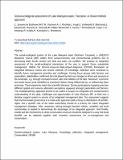| dc.description.abstract | The social-ecological system of the Lake Manyara basin (Northern Tanzania), a UNESCO Biosphere reserve (BR) suffers from social-economic and environmental problems due to decreasing water levels, erosion and land and water use conflicts. We propose an integrated assessment of the social-ecological interactions of the area to support future sustainable management. Within the Drivers-Pressures-State-Impact-Response (DPSIR) framework an integrated literature review and several methods of knowledge collection were combined to identify future management priorities and challenges. During focus groups with farmers and pastoralists, stakeholders confirmed the role played by land use changes as driver and pressure in the landscape, e.g. through increased erosion rates and siltation of the lake. Moreover, economic and social issues were identified as prominent factors being influenced by, or influencing these processes. These statements match the scientific literature. During participatory mapping exercises different spatial and resource allocation perceptions appeared amongst pastoralists and farmers. The multidisciplinary approach proved to be useful to acquire an integrated and comprehensive understanding of the state, challenges and opportunities of Lake Manyara BR, to feed into a decision support system in service of an integrated management plan. Our assessment suggests that improved water governance in a multi-actor approach (with a focus on distribution of benefits, rights, and a specific role of the water authorities) should be a priority for future integrated management strategies. Also, awareness raising amongst decision makers, scientists and local communities is needed to demonstrate the advantages of an integrated approach. And finally, visible and fair mechanisms to share conservation revenues should be designed in a way that local benefits can be obtained together with incentive mechanisms for co-management and conservation. | en_US |

